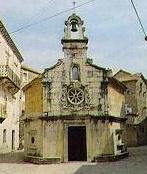About the island of Hvar
The agrarian heart of the island, mainly a wine growing district, was for a long time a guarantee of economic prosperity, but it also gave rise to an impressive cultural superstructure, from the Greek land parcelling (the first "centuriation" of public land in history) and the megalithic walls of Pharos, to the outstanding fortifications and the rich "villae rusticae" with their decorative mosaics.

There are also Christian churces with marble furniture and weaved ornaments, the authentic urban centres such as Vrboska and Jelsa (with "embryonic" churces/fortresses) or the picturesque peripheral settlements which form a chain from Rudina and Selca to Dol, Vrbanj, Svirce, Vrisnik and Pitve.
The eastern part of the island, the area of Plame ( Poljica, Zastrazisce, Gdinj, Bogomolje and Sucuraj), joined the cultural exchange and permanent colonization somewhat later, but since the earliest days it has ensured contact with the nearby mainland, thus reducing the isolation of the island.
On the other hand, the southwestern side of the island, bordered by the romantic string of the Pakleni otoci (Resin Islands) and crowned by the sun-bathed slopes and thoroughly protected harbor of the town of Hvar, emphasizes a Mediterranean, maritime orientation, and has, since Venetian times, been in close contact with the main cultural flows.
With its balance between rich natural gifts and adequate human attendance, the island of Hvar represents an ideal place of serene living and repose. We feel as though the multi-layered values are inviting us to go on a pilgrimage there, and not just feverishly and superfically consume them.
Back
